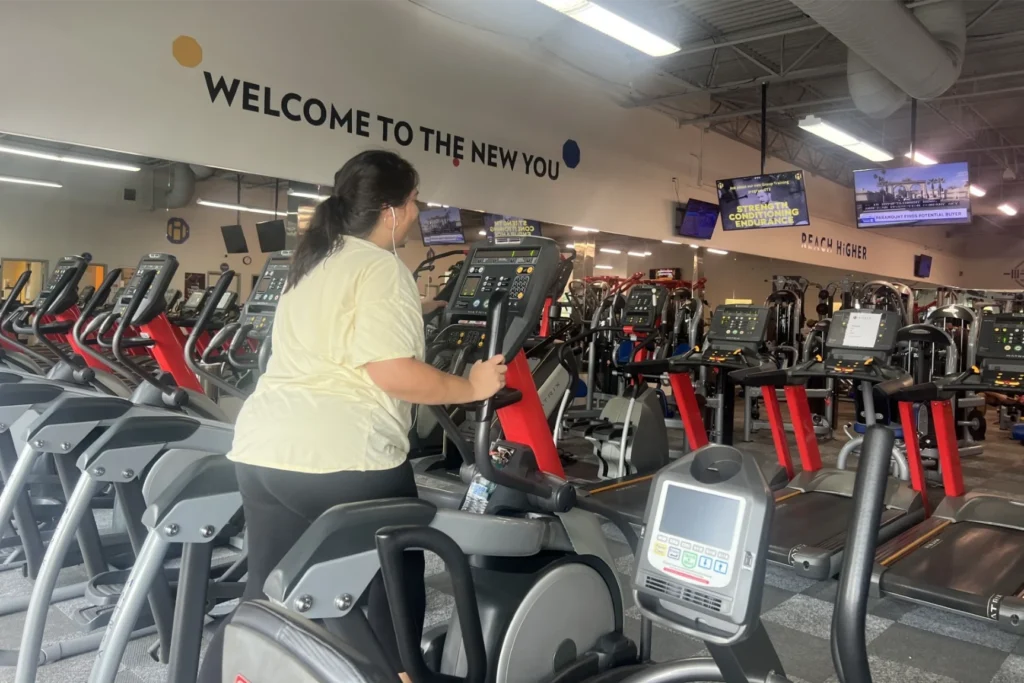When it comes to fitness, the debate between High-Intensity Interval Training (HIIT) and weight training is ongoing. Both have their unique benefits and drawbacks, and the best choice often depends on individual fitness goals. In this article, we’ll compare their benefits, and help you decide which might be better suited for your fitness journey.
What is HIIT?
High-intensity interval Training (HIIT) involves short bursts of intense exercise followed by brief periods of rest or lower-intensity exercise. It’s designed to keep your heart rate up and burn more fat in less time.
Benefits of HIIT
Cardiovascular health: HIIT is excellent for improving cardiovascular health. The intense bursts of activity increase heart rate and improve heart function over time. This type of training challenges your heart to pump blood more efficiently, which can lead to better overall cardiovascular fitness.
Time efficiency: One of the biggest advantages of HIIT is that it’s incredibly time-efficient. You can get a full workout in just 20-30 minutes, making it perfect for those with busy schedules. The short, intense bursts of exercise ensure that you get a high-quality workout in a fraction of the time compared to traditional workouts. HIIT routines can be as short as 10 minutes while remaining impactful and efficient.
For beginners looking to experience this time efficiency firsthand, structured treadmill HIIT routines provide an accessible starting point that delivers maximum metabolic impact in minimal time.
Fat-burning potential: HIIT has a high fat-burning potential. The intense exercise and subsequent recovery periods boost metabolism and promote fat loss even after the workout is finished. This phenomenon, known as excess post-exercise oxygen consumption (EPOC) or the “afterburn effect,” means that your body continues to burn calories at an elevated rate for hours after the workout.
Drawbacks of HIIT
Intensity and recovery: The high intensity of HIIT can be taxing on the body, requiring adequate recovery time. Overdoing it can lead to burnout or overtraining. Because HIIT workouts push the body to its limits, they can cause significant muscle soreness and fatigue. It’s essential to allow enough time for recovery between HIIT sessions to avoid overtraining, which can lead to decreased performance, increased risk of injury, and mental burnout. For that reason, if you are a beginner, it is best to start with a HIIT class that is led by an expert. If you are looking for HIIT classes in Concord, visit HiTone Fitness, claim your 3-day free pass, and get a chance to experience these classes without any cost.
Expand on your HIIT knowledge, read these effective routines for a stronger back.
What is weight training?
Weight training, also known as resistance or strength training, involves using weights or resistance to induce muscle contractions. This type of training is excellent for building muscle mass and strength.
Benefits of weight training
Muscle building: Weight training is unparalleled for building and maintaining muscle mass. It’s the cornerstone of strength development. When you lift weights, you create small tears in your muscle fibers. As these fibers repair, they grow back stronger and larger, leading to increased muscle mass. This process, known as muscle hypertrophy, is essential for anyone looking to gain muscle and improve overall strength.
Metabolic boost: Increased muscle mass from weight training can boost your metabolism, helping you burn more calories even at rest. Muscle tissue is metabolically active, meaning it requires more energy to maintain than fat tissue. As you build more muscle, your resting metabolic rate (RMR) increases, leading to greater calorie expenditure throughout the day. This metabolic boost can be particularly beneficial for weight management and fat loss, as it helps create a calorie deficit even when you’re not actively working out.
Bone health: Weight training improves bone density, reducing the risk of osteoporosis and fractures, especially as you age. When you lift weights, the stress placed on your bones stimulates bone formation and increases bone mineral density. This adaptation helps strengthen your skeletal system, making it more resilient to fractures and other injuries.
Drawbacks of weight training
Risk of injury: Improper form or excessive weight can lead to injuries. It’s essential to learn proper techniques and start with manageable weights. Common weight-training injuries include muscle strains, ligament sprains, and joint issues, which often result from poor technique, inadequate warm-up, or attempting to lift too much weight too soon. To minimize the risk of injury, it’s important to focus on proper form and technique, gradually increasing the weight and intensity of your workouts as your strength and skill level improve.
Seeking guidance from a certified trainer or fitness professional can also help ensure that you perform exercises correctly and safely. Additionally, incorporating flexibility and mobility exercises into your routine can help maintain joint health and prevent injuries.
See how weight lifting looks like from a practical standpoint with these kettlebell leg workouts.
HIIT vs. weight training – A comparative analysis
Goal: Fat loss: HIIT is generally more effective for quick fat loss due to its high-calorie burn and metabolic boost. However, weight training also contributes significantly to fat loss by increasing muscle mass and metabolism.
Goal: Muscle gain: Weight training is the superior choice for building muscle mass. While HIIT can help tone muscles, it doesn’t provide the same level of hypertrophy as weight lifting.
Goal: General fitness: For overall fitness, combining both HIIT and weight training can be highly effective. HIIT enhances cardiovascular health and endurance, while weight training builds strength and muscle.





